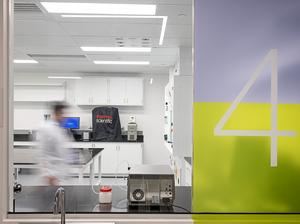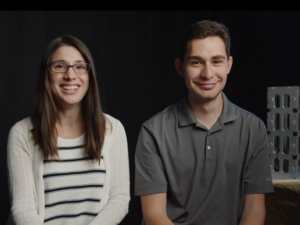
When humans are born, we are essentially legally blind. Instead of 20/20 vision, babies have something like 20/800 vision. Yet, by watching people and objects in motion, we are able to discern shapes and extract meaning from them early on. We can understand what a human face is at just a few days old.
This is something that separates humans from machines—at least, for now.
Machine sensors have difficulty parsing visual information. When they do successfully parse visual cues—think increasingly powerful smartphone cameras, or the backup camera on a car—those sensors typically rely on just a few inputs, according to biomedical engineering expert Bo Zhu. They are consequently imperfect, and they have an especially difficult time operating in low light.
As the co-founder and chief technology officer of BlinkAI Technologies, Zhu wants to change all that.
BlinkAI is a Boston-based startup aiming to transform how sensors work through the use of machine learning. Along with his co-founder and CEO Selina Liying Shen, Zhu has created a machine learning model that allows cameras to "learn" about the objects within the frame the same way a human child learns to see.
The company's software-centric approach is a significant departure from the hardware that companies in this space have historically relied on. With BlinkAI's proprietary neural network, companies can use software to enhance their existing sensors' capabilities rather than buy a new one that's "25 times larger," Zhu said.
"Our innovation is to bring the model of how humans learn to see and recapitulate that with artificial neural networks," Zhu said. "[We're] putting a brain behind the camera sensor, which dramatically improves the performance of the sensor with the raw data that we're taking in."
Last year, Zhu was lead author on a paper published in Nature detailing the basis of that technology. In the paper, Zhu and his co-authors wrote that the technology "provides a new paradigm for image reconstruction," with potential applications across imaging modalities.
The technology comes from the world of medical imaging. It spun out of Harvard University, MIT and the Martinos Center for Biomedical Imaging, which is affiliated with Massachusetts General Hospital. But Zhu and Shen see their technology having applications far beyond the medical world. It can be applied to smartphone cameras; autonomous cars, drones and boats; home security sensors; and cameras on IoT objects like doorbells, refrigerators and robo-taxis.
Zhu is a postdoctoral research fellow at both the Martinos Center and Harvard. Shen graduated with a doctoral degree from Harvard in 2016.
The two also happen to be married.
It was a whirlwind handful of years for the two of them. Shen and Zhu began dating in 2015; in May of 2017, they began discussing the initial plans for BlinkAI. In September that same year, they were married. In December, Shen quit her job to work on BlinkAI full time as the company's CEO.
"We were planning a wedding and planning a company at the same time," Shen said. "Both the marriage and the company were a joint venture. "
Since officially founding BlinkAI in February 2018, the couple has raised $2.5 million for the company, officially coming out of stealth mode in May this year. They plan on raising another round of funding in the near future. BlinkAI also participated in STEX25, a startup accelerator within MIT Startup Exchange that hosts 25 “industry ready” startups that have proved to be exceptional with early use cases.
Earlier this year, BlinkAI was awarded the 2019 Audience Choice Winner for vision-based product innovation at the Embedded Vision Summit.
https://www.youtube.com/watch?v=EsWHTQaxATY
Moving forward, Zhu and Shen plan to bring a minimally viable product to the consumer market. They've been holding conversations with industry experts to figure out the best approach to move their technology out of the lab world and into "the real world," as Shen put it, with an initial focus on the automotive, smartphone and robotics industries.
"We're really leveraging the whole ecosystem, amplifying the capability of what a computer can do at a very low cost," Zhu said. "That is what we really believe to be the future, in terms of how we improve imaging in very challenging visual conditions, is going to be computers rather than hardware."








